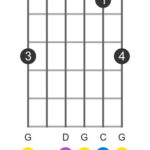Choosing your first guitar is an exciting step for any aspiring musician. As you explore the options, you’ll quickly encounter guitars of different sizes, notably 3/4 size guitars and full-size guitars. Understanding the distinctions between these sizes is crucial to ensure you select an instrument that supports your learning journey and playing comfort. This guide delves into the world of 3/4 guitars, comparing them to their full-size counterparts to help you determine the ideal fit for your musical aspirations.
Whether you are a beginner just starting to learn chords, an experienced player seeking a travel-friendly option, or simply someone with a smaller frame, the size of your guitar significantly impacts your playing experience. Let’s explore the key differences between 3/4 guitars and full-size guitars to empower you to make an informed decision.
Decoding the Dimensions: 3/4 Guitar vs. Full-Size Guitar
The most apparent difference between a 3/4 guitar and a full-size guitar lies in their dimensions. A typical 3/4 size guitar measures approximately 36 inches in length and 13 inches in width, while a full-size guitar is larger, around 40 inches long and 15 inches wide. Another critical measurement is the scale length, which is the vibrating length of the strings between the nut and the bridge. Full-size guitars generally have a scale length exceeding 24 inches, whereas 3/4 guitars feature a shorter scale length, ranging from 20 to 24 inches.
This difference in size and scale length has several implications for playability and sound. One notable aspect is string tension. Full-size guitars, with their longer scale length, have higher string tension, contributing to tuning stability and a resonant sound. Conversely, the shorter scale of a 3/4 guitar results in lower string tension, which can make it easier to fret notes, especially for beginners or those with less hand strength. However, this reduced tension might also mean that 3/4 guitars require more frequent tuning adjustments.
Cost is another factor to consider. While high-end full-size guitars can reach prices in the thousands of dollars, you can find 3/4 guitars at more budget-friendly price points, sometimes under a hundred dollars. However, it’s important to remember that price isn’t always indicative of quality, and both 3/4 and full-size guitars are available across a wide range of price points and quality levels.
Perhaps the most significant difference lies in the sound produced by each guitar size. Full-size guitars are celebrated for their rich, full, and resonant tone, capable of producing a wide spectrum of sounds. In comparison, a 3/4 guitar, due to its smaller body and shorter scale length, may not possess the same depth and richness of tone as a full-size guitar. However, advancements in guitar design and construction mean that many 3/4 guitars can still deliver impressive sound quality, especially for their size and intended purpose.
Now that we have a general overview, let’s delve deeper into specific 3/4 acoustic guitar models that offer excellent value and performance.
Top 3/4 Acoustic Guitars on the Market
Zager 3/4 Acoustic Travel Guitar
Looking for a compact guitar that doesn’t compromise on quality? The Zager 3/4 Travel Series is designed for portability and players who prefer a smaller instrument. Despite their size, these guitars are built with the same premium woods and hardware as Zager’s full-size models, promising enhanced sound with age.
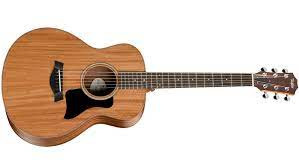 Zager 3/4 Acoustic Travel Guitar
Zager 3/4 Acoustic Travel Guitar
Image alt text: Zager 3/4 Travel Series acoustic guitar, mahogany body, smaller size ideal for travel and young players.
Denny Zager, a master luthier with over 60 years of guitar expertise, brings his experience to crafting these guitars. The Zager 3/4 Travel Series incorporates essential elements for excellent playability, including solid wood construction, a comfortable custom neck profile, and optimized string spacing for faster and more accurate playing. The unique bracing system and hand-carved bone nut and saddle contribute to a richer, deeper sound than you might expect from a smaller guitar.
Customer testimonials and magazine reviews consistently praise the Zager 3/4 Travel Series for its exceptional value, often outperforming guitars twice its price. Zager backs their guitars with a 100% money-back guarantee, including shipping, allowing you to try it risk-free. For under $700, it presents a compelling alternative to mass-produced guitars.
Price: US $795
Taylor GS Mini-e Mahogany 3/4 Acoustic Guitar
The Taylor GS Mini-e Mahogany brings the renowned Taylor sound into a more compact and accessible 3/4 size acoustic guitar. It’s an excellent choice for beginners and experienced players alike who appreciate Taylor’s quality and tone in a smaller package.
 Zager 3/4 Acoustic Travel Guitar
Zager 3/4 Acoustic Travel Guitar
Image alt text: Taylor GS Mini-e Mahogany acoustic guitar, showcasing its compact GS Mini body shape and mahogany top, suitable for travel and smaller players.
Despite its smaller scale, the GS Mini-e maintains the same string spacing as full-size Taylor guitars, ensuring a familiar feel for Taylor enthusiasts. The Ebony fretboard offers a smooth playing surface with unique wood grain patterns. The mahogany top is key to its rich, warm tone, delivering surprising depth for a guitar of this size. Onboard electronics with treble and bass controls allow you to amplify and shape your sound when needed.
Key features include Sapele laminate back and sides, a Sapele neck, a 23½” scale length, and 20 frets. Die-cast chrome tuners add to both the functionality and aesthetics. A left-handed version is also available. The natural finish enhances its visual appeal.
Price: US $799
Yamaha JR1 FG 3/4 Acoustic Guitar
For beginners seeking an affordable and quality 3/4 guitar, the Yamaha JR1 FG is a top contender. It offers Yamaha’s renowned quality at a budget-friendly price, making it an excellent entry point into the world of guitar playing.
With its slim neck and short scale, the JR1 FG is designed for easy playability, particularly for younger musicians. The rosewood fretboard further enhances playing comfort, facilitating smooth chord transitions. While it might lack some low-end resonance compared to larger guitars, it projects well in the mid and upper ranges, making it suitable for practice and casual playing.
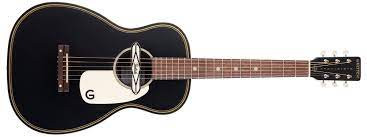 Yamaha JR1 FG 3/4 Acoustic Guitar
Yamaha JR1 FG 3/4 Acoustic Guitar
Image alt text: Yamaha JR1 FG 3/4 size acoustic guitar, highlighting its compact body and user-friendly design for beginner guitarists.
The JR1 FG features a solid Sitka spruce top and high-pressure laminate back and sides, balancing durability and sound quality. Chrome-enclosed gear tuners ensure reliable tuning stability. A left-handed version is also available.
Price: US $200
Gretsch G9520E ‘Gin Rickey’ 3/4 Acoustic Guitar
The Gretsch G9520E ‘Gin Rickey’ stands out with its vintage aesthetic and unique Gretsch Deltoluxe soundhole pickup. It appeals to players seeking a guitar with character and a distinctive amplified tone, in a comfortable 3/4 size.
 Yamaha JR1 FG 3/4 Acoustic Guitar
Yamaha JR1 FG 3/4 Acoustic Guitar
Image alt text: Gretsch G9520E Gin Rickey acoustic-electric guitar, showcasing its retro Smokestack Black finish and Deltoluxe soundhole pickup.
The Gin Rickey has garnered a dedicated following for its blend of style and substance. Its unplugged tone is surprisingly impressive for its price, offering a good low-end response and clear note definition across the walnut fretboard. Open chords sound particularly rich on this instrument.
When amplified, the Gretsch Deltoluxe pickup delivers a tone reminiscent of an electric guitar, making it well-suited for blues and slide guitar styles. It offers a unique sonic character that sets it apart from other 3/4 acoustic guitars.
Price: US $389
Cordoba Cadete 3/4 Classical Acoustic Guitar
For those drawn to classical guitar, the Cordoba Cadete 3/4 Classical guitar is an excellent option. Designed for aspiring classical guitarists, it features nylon strings that are gentler on the fingers, making it ideal for beginners exploring this genre.
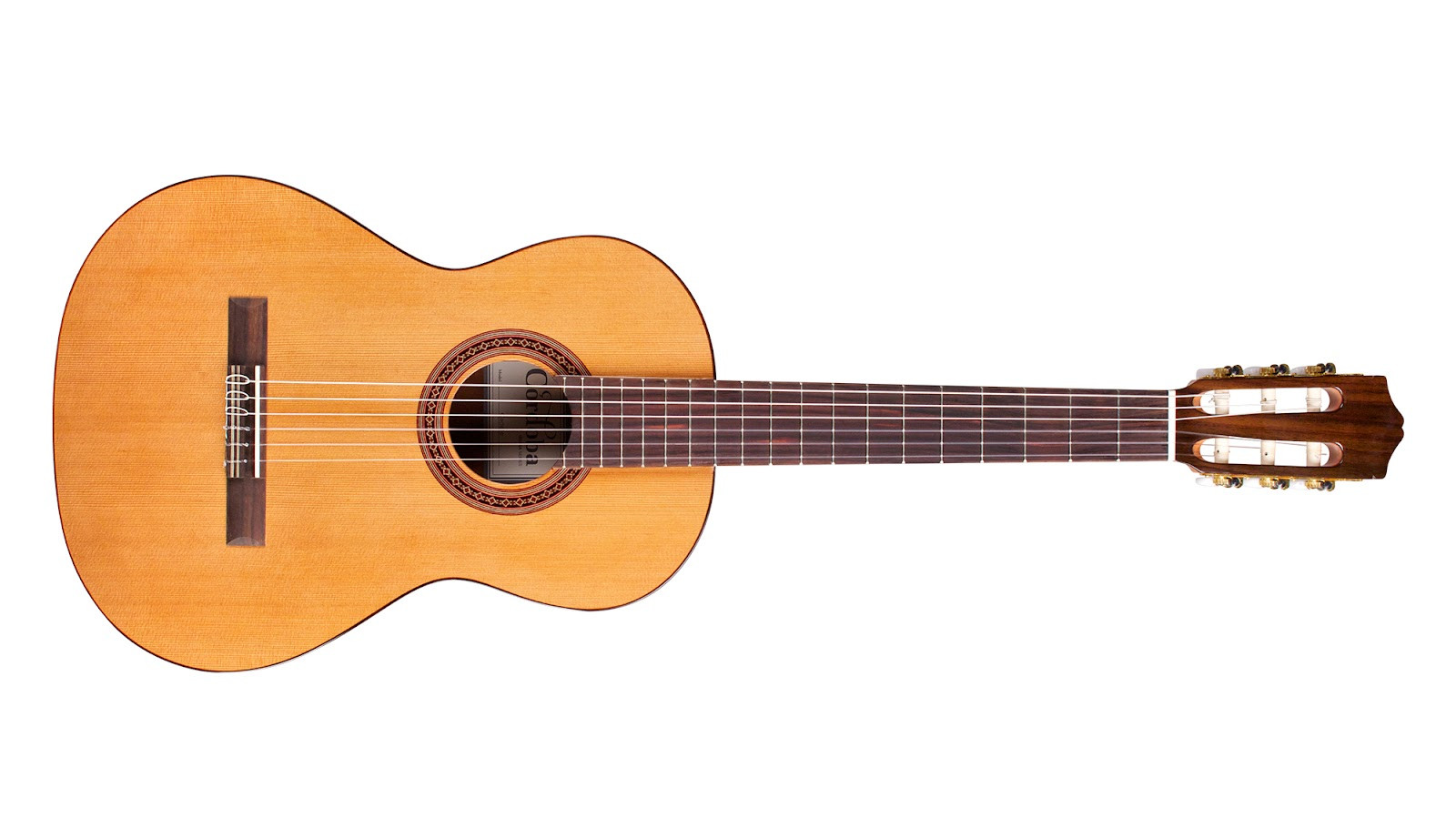 Cordoba Cadete 3/4 Classical Acoustic Guitar
Cordoba Cadete 3/4 Classical Acoustic Guitar
Image alt text: Cordoba Cadete 3/4 size classical guitar, highlighting its traditional design with nylon strings and cedar top, suitable for classical music beginners.
The mahogany neck is designed for comfort, particularly for fingerstyle playing, and the flat-radius rosewood fretboard encourages exploration of classical guitar techniques. However, its versatility extends beyond classical music. The solid cedar top is a notable feature at this price point, delivering exceptional sound quality comparable to full-size classical guitars. It offers a resonant and natural tone suitable for various playing styles.
Price: US $389
Full-Size Acoustic Guitars: Exploring the Standard
The acoustic guitar market is rich with options, offering a vast array of instruments for every playing style and budget. While 3/4 guitars cater to specific needs, full-size guitars remain the standard and offer a broader range of tonal possibilities and projection.
Navigating the numerous choices can be overwhelming, but understanding the characteristics of full-size guitars will help you appreciate their role and differences compared to 3/4 guitars.
Zager 900CE Acoustic Guitar
For players seeking a high-end full-size acoustic guitar, the Zager Pro Series 900CE is a premium option. Zager positions it as offering exceptional quality and sound without sacrificing playability, competing with guitars at significantly higher price points.
Zager emphasizes the 900CE’s unique bracing system, which they claim enhances projection and power. They state that it creates a more resonant experience for the player. Zager Pro Series guitars undergo an aging process and thinner finish application to enhance sound depth and clarity. Abalone and pearl inlays are hand-laid, reflecting a high level of craftsmanship.
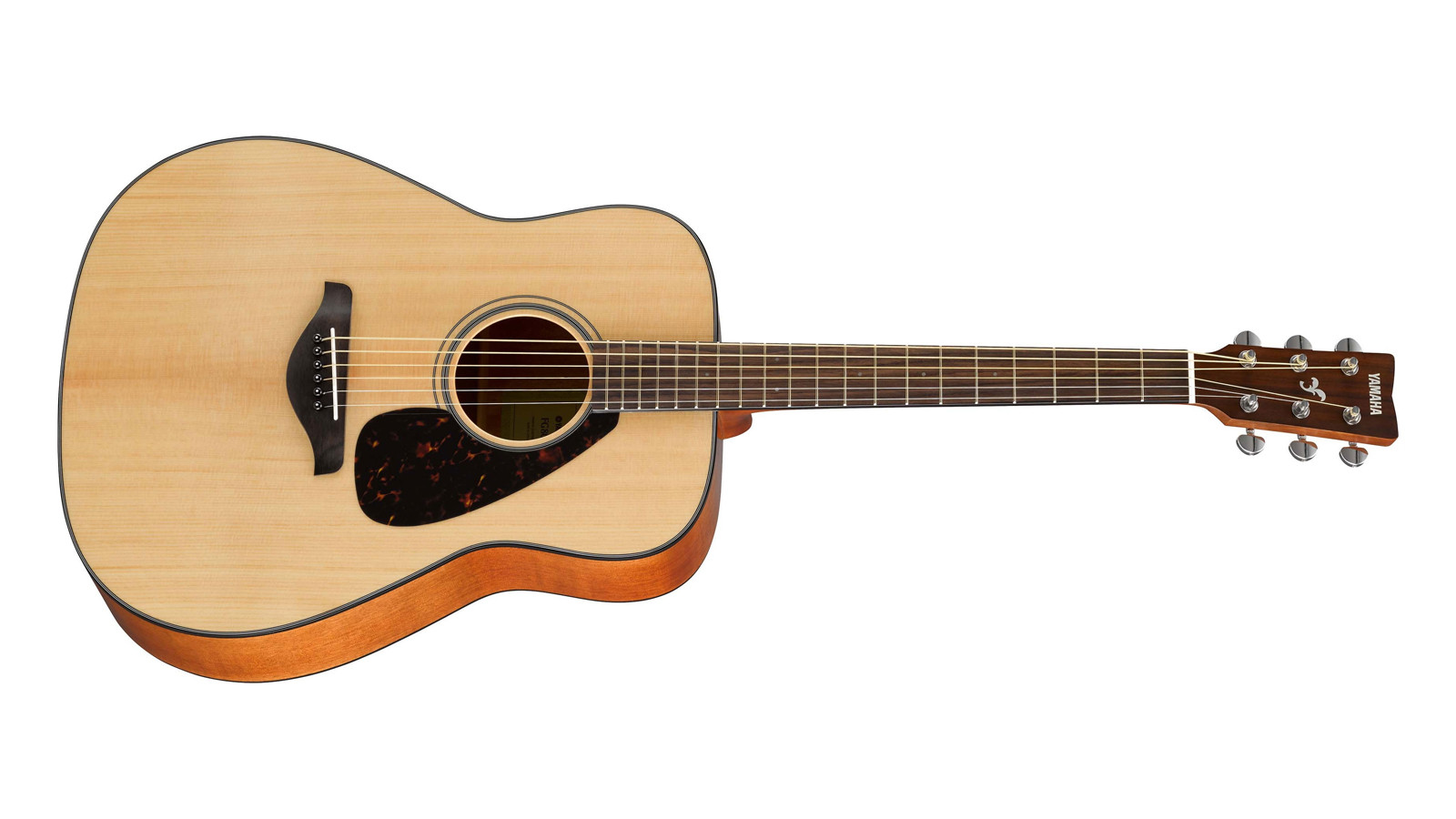 Yamaha FG800 review | Guitar World
Yamaha FG800 review | Guitar World
Image alt text: Yamaha FG800 acoustic guitar, showcasing its dreadnought body shape and spruce top, a popular choice for beginners and experienced players.
The guitar features Fishman’s Aura Digital Sound Imaging System, allowing users to download sound images to customize their amplified tone. Zager claims the 900CE consistently ranks highly among acoustic guitars worldwide and receives positive reviews from professional musicians. They offer a lifetime warranty and a 100% money-back guarantee, including shipping.
Price: US $2395
Yamaha FG800 Acoustic Guitar
The Yamaha FG800 is widely recognized as an excellent beginner full-size acoustic guitar, known for its exceptional value. It features a solid Sitka spruce top, which is uncommon at its price point, contributing to its sound quality.
The FG800 has a maple fretboard and a streamlined design. Sitka spruce is praised for its tonal characteristics, providing tight highs, a strong bass response, and emphasis on lower chords. The Yamaha FG800 is designed to be durable and offer lasting sound quality for beginners and beyond.
Price: US $229
Seagull S6 Original Acoustic
The Seagull S6 Original is a well-regarded full-size acoustic guitar, particularly for its price range. While it lacks the preamp of the QI version, it remains a strong option for players who prefer acoustic playing without amplification.
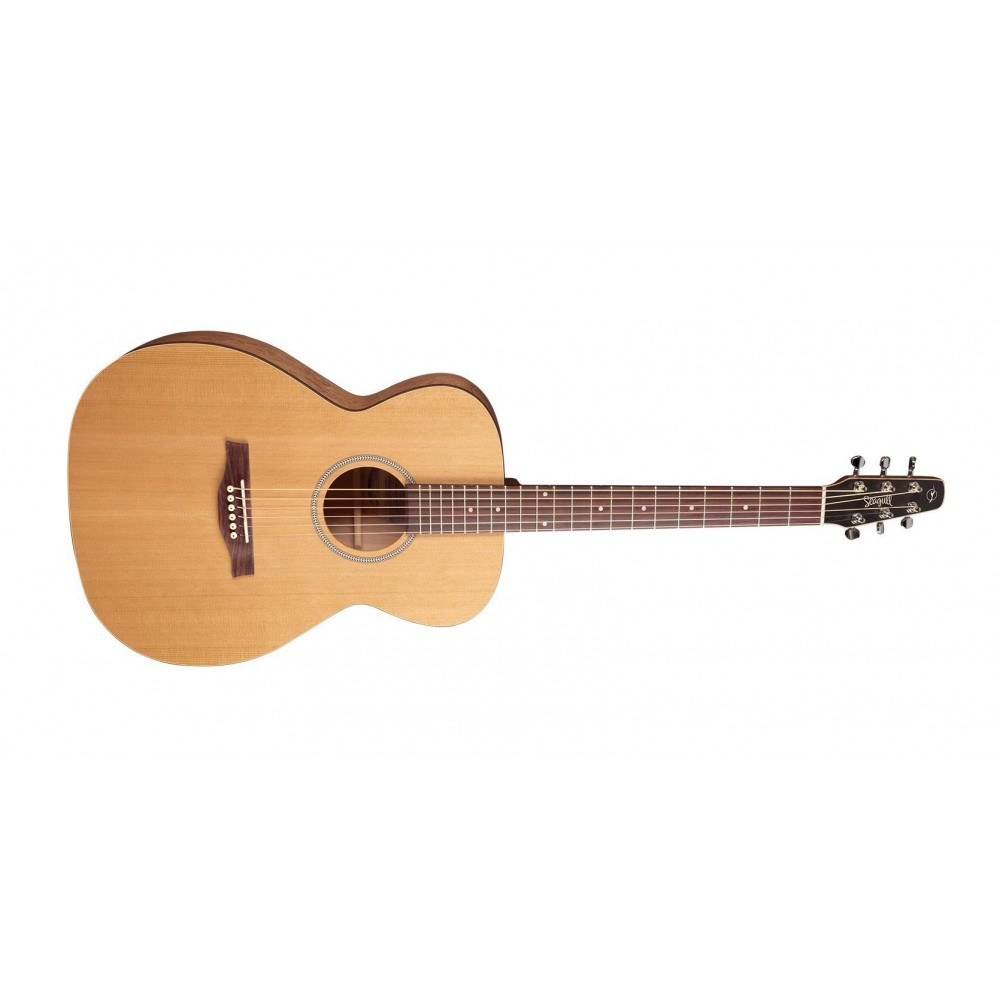 Seagull S6 Original Acoustic
Seagull S6 Original Acoustic
Image alt text: Seagull S6 Original acoustic guitar, featuring its distinctive headstock and combination of cedar top and cherry back and sides.
A key feature is its tonewood combination: a solid cedar top with cherry back and sides. This pairing is said to produce a bright and crisp sound, particularly well-suited for fingerpicking. However, Seagull states it is versatile enough for various playing styles and genres. The Seagull S6 is often recommended as a solid intermediate-level acoustic guitar.
Price: US $799
Martin LXK2 Little Martin 3/4 Acoustic Guitars
The Martin LXK2 Little Martin, while named “Little Martin,” is discussed within the context of full-size guitars in the original article, perhaps due to Martin also offering smaller travel guitars truly in the 3/4 size category. However, for clarity and based on common market understanding, it’s important to note the LXK2 is often categorized as a travel or smaller body guitar but not strictly a 3/4 size in comparison to models like the GS Mini or JR1. It is included here as it was in the original article and serves as a point of comparison, even if its size classification is nuanced.
The LXK2 is presented as a travel-friendly option from Martin, designed for portability and players with smaller hands or those who prefer a smaller body guitar. Despite not using solid wood for the top (using HPL), it incorporates spruce bracing and Martin’s neck mortise construction. Martin is known for functional and well-sounding guitars, and the LXK2 is presented as an example of this, even with laminate materials. A padded gig bag is included for portability.
Price: $399
Takamine GN93CE Acoustic Guitar
The Takamine GN93CE is a full-size acoustic-electric guitar designed for players who need to plug in. It features a solid spruce top, rosewood sides, and a three-piece quilted maple back, creating a unique tonewood profile emphasizing mids and treble.
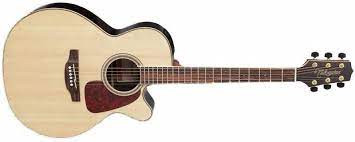 Takamine GN93CE Acoustic Guitar
Takamine GN93CE Acoustic Guitar
Image alt text: Takamine GN93CE acoustic-electric guitar, showcasing its NEXC body shape and cutaway, equipped with TK-40D preamp for amplified performance.
It includes a TK-40D preamp with a tuner, 3-band EQ, and gain knob. The body shape is described as a hybrid dreadnought/concert, offering versatility in playing styles. It is presented as suitable for both performance and general playing, particularly melodic styles and live situations due to the preamp.
Price: US $799
3/4 Guitar Types: Nylon, Steel-String Acoustic, or Electric?
When considering a 3/4 size guitar, you also have the choice between different types: classical (nylon-string), acoustic (steel-string), or electric. The best choice depends on the player’s age, experience, and musical interests.
For young beginners, a 3/4 size classical guitar with nylon strings is often recommended. Nylon strings are softer on the fingertips, making it easier to learn chords and play comfortably when starting out.
For older children, teenagers, or adults, a 3/4 size steel-string acoustic or electric guitar might be more appropriate, particularly if they are interested in pop, rock, or other genres that typically use steel-string guitars. Players with more developed hand strength can handle the slightly higher string tension of steel strings and may prefer the brighter and louder sound of steel-string acoustics or the versatility of electric guitars.
About Zager Guitars
Zager Guitars is highlighted as a family-owned, third-generation guitar builder based in Lincoln, Nebraska, with history dating back to 1902. They emphasize their ranking within the top 5% of guitar brands and media recognition in publications like Time Magazine and Forbes. Zager also emphasizes its charitable donations of guitars to children and schools.
Zager promotes a “precision build” process, utilizing computer-controlled milling, laser cutting, and robotic finishing. They draw a comparison to Taylor Guitars’ use of automation for high-end models, suggesting that computer-aided manufacturing increases precision over hand-built methods. Zager differentiates themselves by locating their automated manufacturing in Indonesia, which they claim reduces material costs, allowing them to offer high-tech guitars at lower prices compared to brands manufacturing in the US or Mexico.
Frequently Asked Questions about 3/4 Guitars
Who is a 3/4 Guitar For?
3/4 guitars are often recommended for children aged 6 to 10 due to their smaller size, which can be more comfortable and manageable for smaller bodies and hands. The reduced scale length and string spacing can also make it easier for children to learn and play. However, the article also notes that 3/4 guitars are not exclusively for children.
Can Adults Use a 3/4 Guitar?
Yes, adults can definitely use 3/4 guitars. Smaller adults, or anyone who finds full-size guitars uncomfortable due to arm length or hand size, may find 3/4 guitars ergonomically beneficial. The smaller size can also be advantageous for travel or for players who prefer a more compact instrument.
Do Professional Guitarists Play 3/4 Guitars?
Yes, some professional guitarists do use 3/4 guitars. Ed Sheeran is mentioned as a well-known example who frequently plays 3/4 size guitars, suggesting that they can be suitable for professional performance and recording depending on the desired sound and playing style.
Is a 3/4 Guitar a “Real” Guitar?
Yes, a 3/4 guitar is a real, fully functional guitar, just smaller in scale than a full-size guitar. It is not a toy. It is a legitimate instrument capable of producing music and is used by beginners, experienced players, and even professionals in various musical contexts. The choice between a 3/4 and full-size guitar depends on individual needs and preferences.

